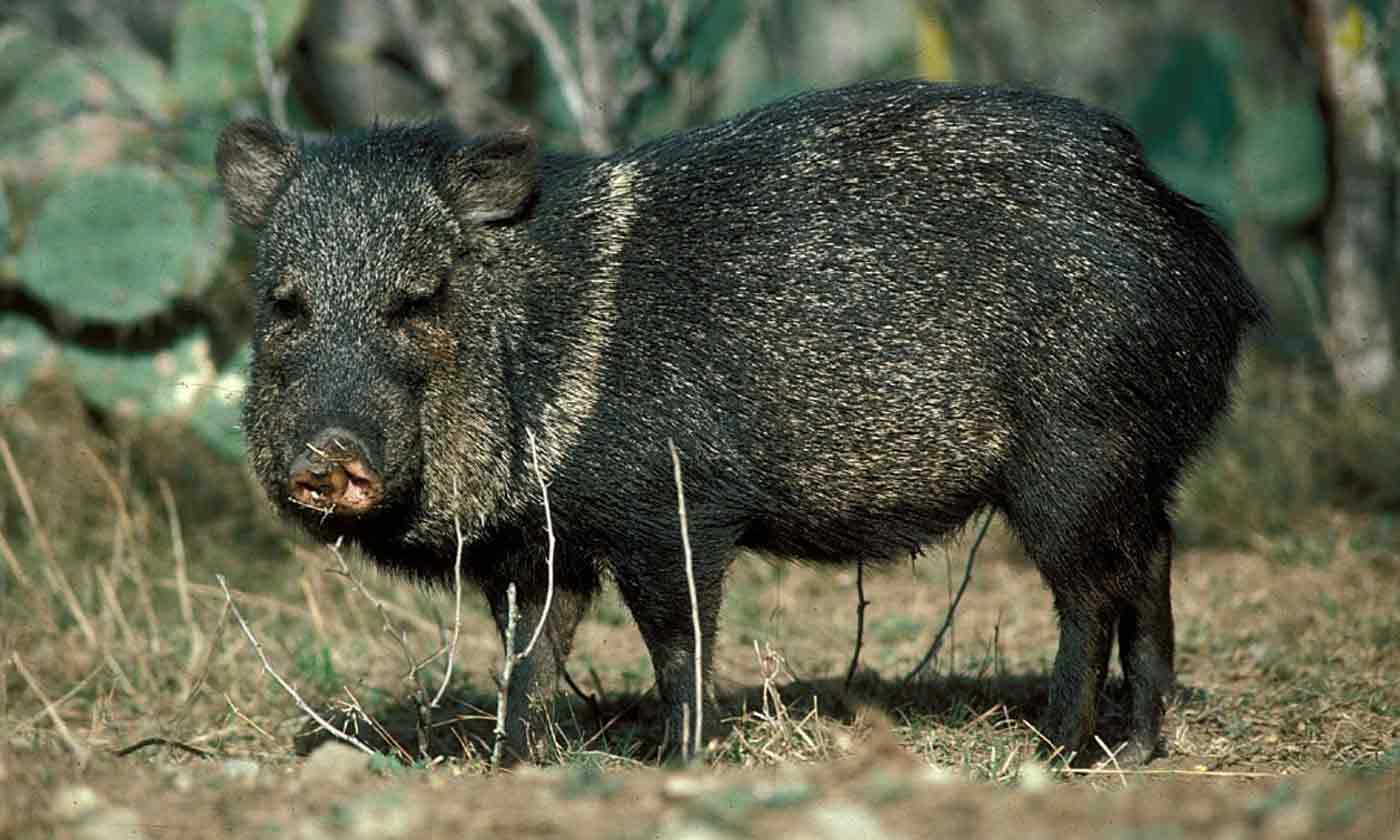Friends who are loyal to Bernhard Meat Processing & Market in Kerrville, Texas, for their deer processing (because they use paper, not plastic, for wrapping the meat) recently noticed Bernhard’s also processes javelina. Growing up, they recalled their grandfather hunting javelina but, until they noticed it on this processing menu, they hadn’t given these spiky-haired “pigs” much thought recently. Their focus in the past couple of decades, rather, has been on feral hogs. They’re about the same, right?
Wrong. Javelina we got some “pig” news for you!
While they inhabit the same range in South and Central Texas, and are somewhat similar in habits and appearance (certainly if you’re squinting your eyes in a hunting stand), in fact, javelina and feral hogs are quite dissimilar. Not only are javelina, as the Texas Parks & Wildlife Department (TPWD) describes, “smaller, have an unnoticeable tail, only one dew claw on the hind foot, a scent gland near the base of the tail, a grizzled-grayish coat with a white band of hair around the shoulder or ‘collar,’ and are more social or herd-like animals,” unlike feral hogs, javelina are not pigs.
Javelina are members of the peccary family. To confuse matters, a peccary is a medium-sized animal, with a strong resemblance to a pig. But, still, not a pig. The ultimate differentiator of a peccary from a pig is the shape of the canine tooth, or tusk. In European pigs (our delightful feral hogs), the tusk is long and curves around on itself, whereas in peccaries the tusk is short and straight.
Javelina travel in small “family groups” and enjoy eating prickly pear cactus, versus, say, eating their family like feral hogs who have been known to gnosh on their young. Unlike feral hogs, whose reputation is well-deserved, according to TPWD, javelina have a “long held undeserved reputation for ferocity.” As it turns out, they actually have poor eyesight and will “often remain around humans longer than other wildlife when startled. When cornered, they can defend themselves very effectively with sharp canine teeth or ‘tusks’. Many dogs have been crippled or killed when trying to attack javelina. Yet aggressive encounters with humans are very, very rare.”
Also unlike feral hogs, upon whom it is open season 24/7/365, in Texas, javelina are classified as a game animal requiring a hunting license and a hunting season (hunting dates depend on county). Although they may have been pushed from your radar by those pesky invasive pigs, these native peccaries haven’t gone anywhere. In fact, in Central Texas, Bastrop, Llano, and Mason Counties have small populations of free-ranging javelina. While they may have been off the radar for many of us – until we see them on a meat processing menu – they may be closer than we think!
Grammar Note: In writing this blog, our natural instinct was to use “javelina” as the plural – it just sounded right in our heart. It’s how a Texas grandfather would say it. But our head knew that might not be grammatically correct. In researching the correct plural usage, we stumbled upon others who had also wondered about this very particular peccary plural issue. Texas Parks & Wildlife was inconsistent in their plural usage – sometimes javelina, sometimes javelinas. Ultimately, our head determined that the correct plural was javelinas, but our heart won out. For purposes of this blog, the plural for javelina was deemed…javelina.
If you javelina a hankering for more information on javelina, check out:
Understanding the Differences Between Javelinas and Feral Hogs
Photo, above, via Texas Parks & Wildlife.









